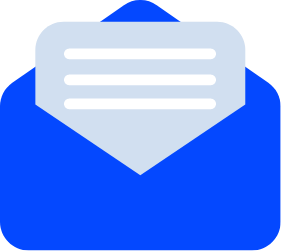


Are you regularly reviewing your employee rewards program and asking result-specific employee questions? If not, how do you know if the program is still fit for purpose, meeting your employee’s needs and driving engagement?
A rewards program is rarely perfect right off the bat. That’s why constant evaluation is a core part of any good rewards program, says the team at SHRM. HR teams need to ask themselves if objectives are being met, whether rewards are fair, and what they can do differently.
“The evaluation process should be completed after every award cycle so that adjustments can be made to improve the system and retain employees’ interest,” they write. “Employers should keep in mind that the behaviors rewarded are likely to be repeated.”
But don’t just ask questions of yourselves. Ask your employees what they think. In addition to discovering potential areas of improvement, the act of seeking feedback can increase engagement.
“There is a strong correlation between feedback exchange and employee engagement not only because of its potential to resolve issues quickly and increase knowledge sharing but also because it creates a way for team and individual successes to be recognized regularly,” writes Impraise cofounder Steffen Maier.
Insightful feedback stems from great questions. You need to know what to ask employees to elicit the kind of information you can use to optimize your program.
Below are five employee questions we recommend asking to improve your rewards program.
To get to the heart of the matter, it’s best to be direct. By asking this employee question, you may unearth reward ideas you hadn’t even considered. Some may be far-fetched, but others may be easy to implement.
You can also use this question as a jumping-off point to discuss other rewards-based preferences. For example, ask employees how they prefer to be rewarded.
There are several different types of recognition, says Maggie Wooll, senior thought leader at BetterUp. “The most appropriate way to thank someone depends on their core values. Some people love public recognition, while others shy away from the spotlight. Always ask your team what form of recognition they prefer, so they feel respected and understood.”

There is a good chance some of your employees will have no idea about the range of benefits you provide. According to research by the International Foundation of Employee Benefit Plans, which found that 49 percent of employees don’t understand their benefits. Worse still, eight in 10 employees don’t open benefits communication.
“Most employees don’t know what rewards they get, so an employer should make sure they communicate with them regularly to ensure they get the most out of the benefits package,” says Justine Woolf, director of consulting at remuneration consultancy Innecto.
If you find that employees don’t know which rewards are available to them, Woolf recommends two courses of action: “Line managers have regular contact with employees so it’s sensible to ensure they understand what’s available,” she says. “Technology can also make it easier, enabling regular and agile communications that are personalised to each employee’s needs.”
Another option is a total reward statement. “Total reward statements are an extremely simple, but effective, way of helping to overcome an employee’s potentially negative perception of their reward package,” writes Tim Kellett, pay and reward expert at Paydata. The reward statement itemizes every single financial and non-financial reward, so employees understand what they get and how much it’s worth.
“By systematically and methodically outlining the benefits, it becomes clear just how much you are investing in your staff, building trust in the employer-employee relationship,” he adds. “If you are struggling with low staff morale, motivation, retention or engagement, total reward statements are often seen as a quick win that will have a large and noticeable impact – as long as your reward scheme is appropriate.”
HR teams may believe there is no bias in their rewards program, but the reality can be far different. This employee question will help you discover just how big the gap between your perception and reality is.
One of the biggest issues when it comes to reward equality is the ability to access benefits. If only some people use rewards then inequalities become exacerbated, says Anton Gunn, CEO at 937 Strategy Group, LLC and a partner at Diversity Crew. “You’ll likely see that you’re providing some benefits to employees, which are not being taken advantage of by certain groups,” he says.
For example, tuition reimbursement is a benefit only useful to those employees interested in pursuing additional education or certifications. Similarly, gym memberships may not be of use to all employees, whether due to disability, childcare or transportation issues.

Employers should aim to reward employees as individuals by offering them benefits they actually care about, says Chris Ford, senior director of B2B at payment solutions provider Blackhawk Network.
“This could be flexible working, working from home once a week, or on-the-spot rewards that can be given in recognition of hard work or personal achievements,” he writes. “These personalised incentives demonstrate that employers care about and understand the individual needs and life-pressures of their workforce as a market of one.”
It’s not always easy to find out exactly what employees really want. Some employees may find it difficult to be open and honest with HR teams when discussing company policies. Understandably, there’s a tendency to toe the company line and not speak your mind.
This question circumvents that proclivity so you can personalize rewards accordingly. You may not be able to create a reward around every answer to this question, but you might find areas — like health and fitness — where you can create rewards.
Not every question you ask employees has to be blatantly reward-related. By discovering your employees’ career goals, you and your HR team can customize learning and development rewards that help them achieve their aspirations.
The benefits of providing these kinds of employee development opportunities are numerous, says Kate Heinz, a senior product marketing manager at Built In, a platform for tech professionals. She lists a couple of reasons in particular that HR teams will want to take notice of.
First, professional development increases retention. “More than 4 million U.S. workers quit their jobs in June 2022, and 40 percent of people surveyed in six countries in 2022 indicated they plan to leave their jobs,” she writes. “So dedicating resources to employee retention is more important than ever.”
Second, employees who take advantage of learning and development opportunities are more productive and their companies are more profitable. “Allowing employees to build their skills and knowledge increases their confidence, allowing them to complete work more efficiently and effectively,” Heinz explains.
You can learn a lot by asking employee questions and listening to what they have to say. Knowing what to ask is only half the battle. The real work starts when you implement your employee’s feedback and make a commitment to seek feedback on a regular basis.
Images by: Christina @ wocintechchat.com, Van Tay Media, Kylie Haulk
